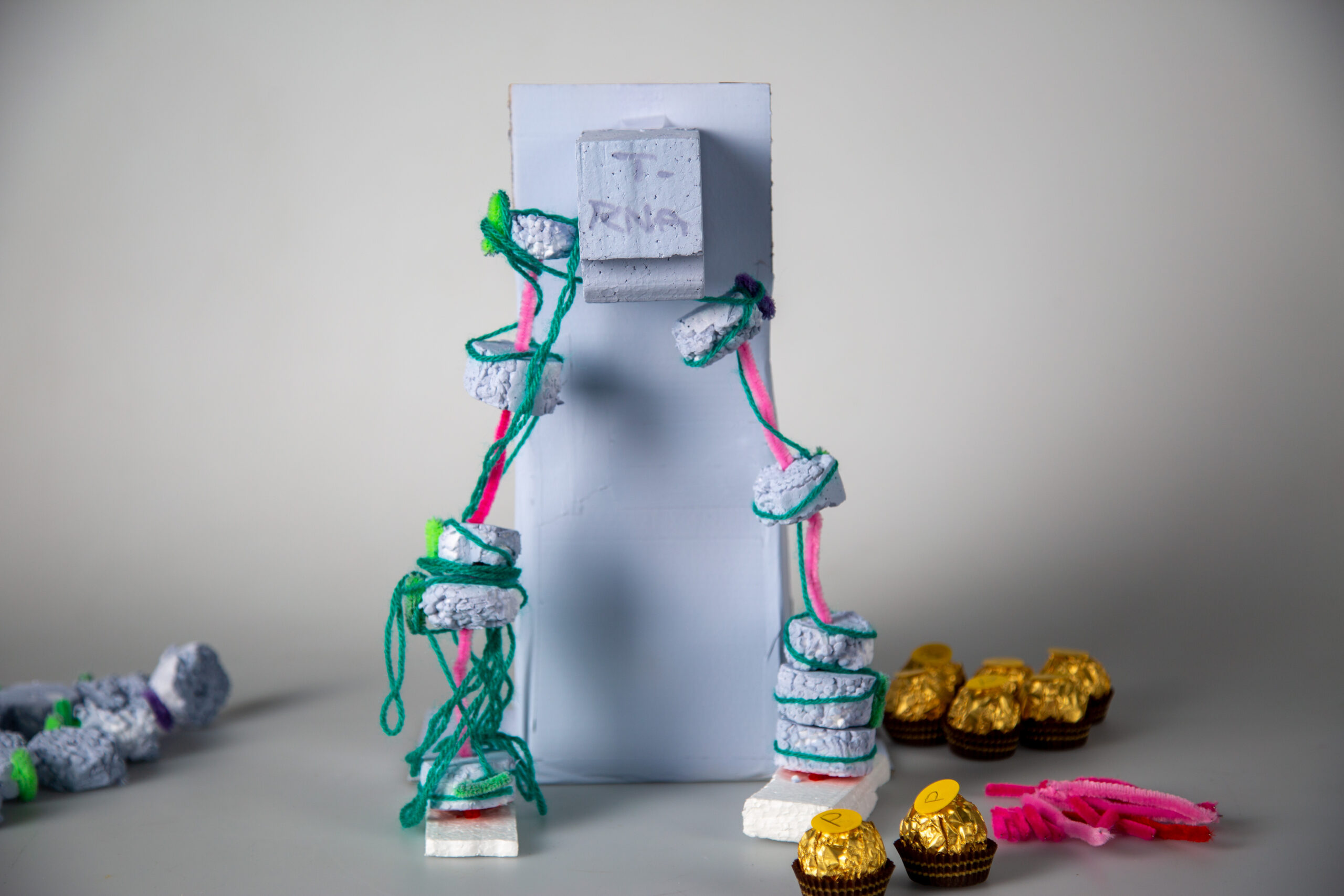During the international week, I attended the workshop “prototyping phygical experiences to bring the lab closer to the street” by Carla Molins. Overall, the workshop was about how we can use interaction design to communicate scientific topics. Our task was to create a prototype that explains chromatin. Chromatin is a way of the DNA-string to fit untangled and in order into the chromosome.
Day 1 | Research and Ideation
On the first day, we got an explanation of Carla about what chromatin is and about the use of it. After that, we jumped right into the topic and had a brainstorming session together. We ask ourselves the question “Can we co-create different experiences to explain chromatin to non-scientists?” and wrote everything that came to our mind on post-it notes and put them on the wall. Afterwards, we tried to bring some order into it and grouped the words into 6 different categories: “What?”, “Where?”, “When?”, “How?”, “For whom?” and “Why?”. Then, we separated in different groups of two to work on our concept. In our group, consisting of Fridtjof and me, we started with trying to answer the question together again. That was kind of hard to do, because we felt like we did not know that much of chromatin yet to come up with a good concept.
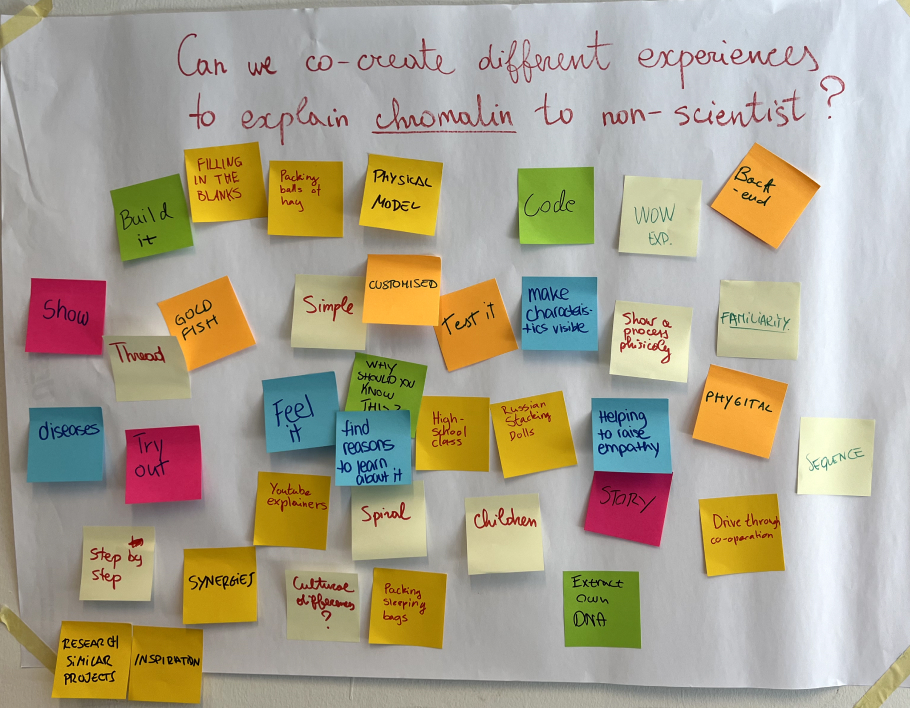
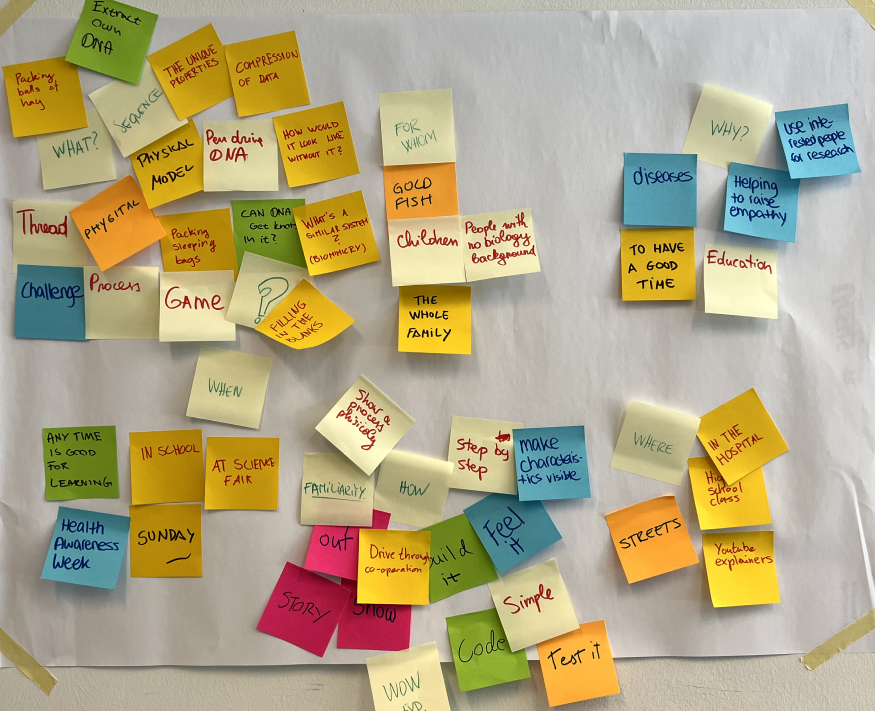
Day 2 | Ideation and Prototyping
On this day, Carla was unfortunately sick and stayed at home, but we had zoom calls with her during the day to keep her up to date about our process. We started with researching more about the topic to get a deeper understanding of it and to make it easier for us to create a concept. We even called Fridtjofs mother, because she is a biologist, so she could also give us an explanation. Then, we all went in different directions with our prototypes and tried to explain different parts of it. Our concept was about to explain the different kinds of chromatin: Euchromatin and heterochromatin. Euchromatin is a “loose” structure, where the information can be easily accessed in contrast to heterochromatin. We decided to have the user build the structure him/herself to get a better understanding of it. To showcase the euchromatin, we made a “T-RNA Scanner”, which reads the information stored in the euchromatin to build protein, which the user got in form of a chocolate. During the day, we also pitched our concepts to each other and evaluate them together, which was really helpful. Then, we already started building the prototype. For our prototype, we used wool, pipe cleaner and Styrofoam. In addition, we created posters that gave instructions and explanations regarding our prototype. The creation of the concept and prototype was an iterating process, because we already made a few small tests and adapted the prototype/concept regarding the outcome.
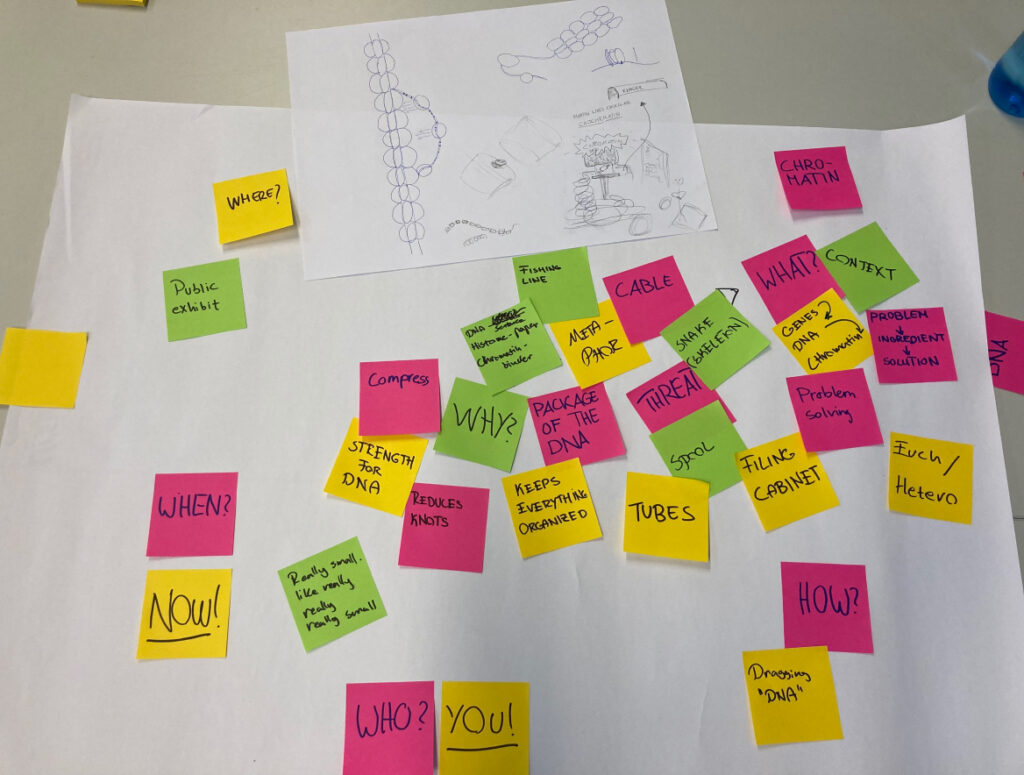
Day 3 | Testing and Enhancing
On this day we performed around five test with different participants. The main outcome was that we should think about our posters again, since we had a lot of different posters with no clear hierarchy so the users got a bit confused or did not recognized them at all. So we spend a lot of the time trying to find out what information is important and should be on the posters, what we can exclude from it and what the overall structure should be. After we were happy with our poster, we enhanced our prototype with different supplies, we bought in the hardware store. We also managed to go to the photo studio to get some pictures of our prototype. We also spend a lot of the day testing the projects of the other people.
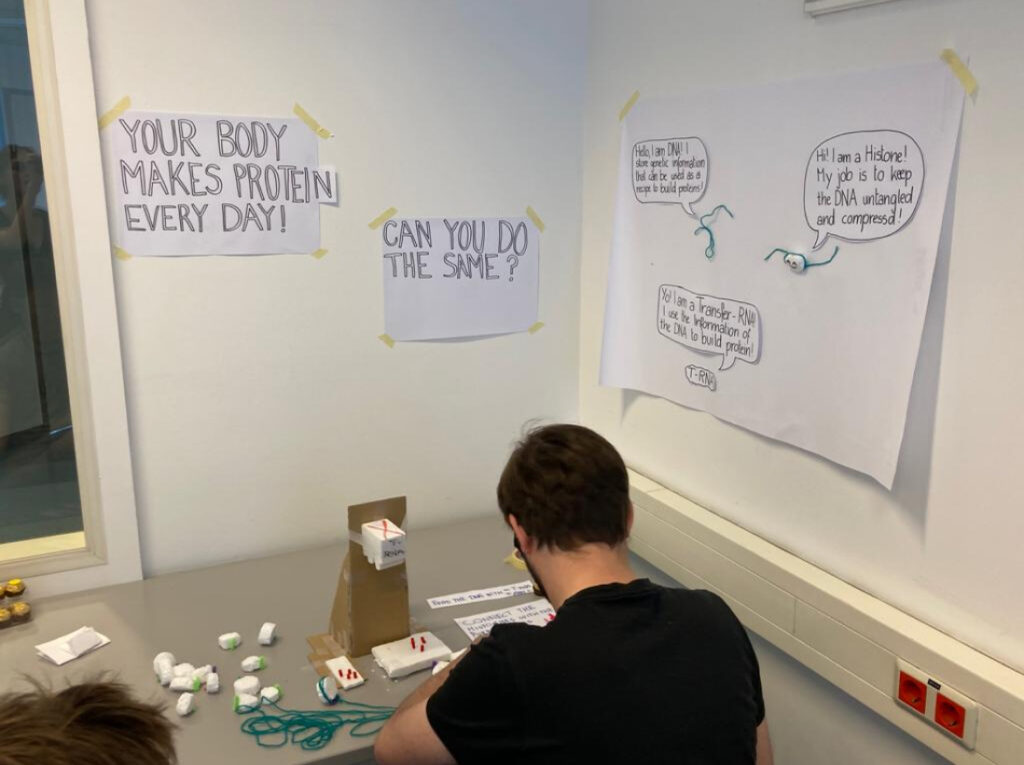

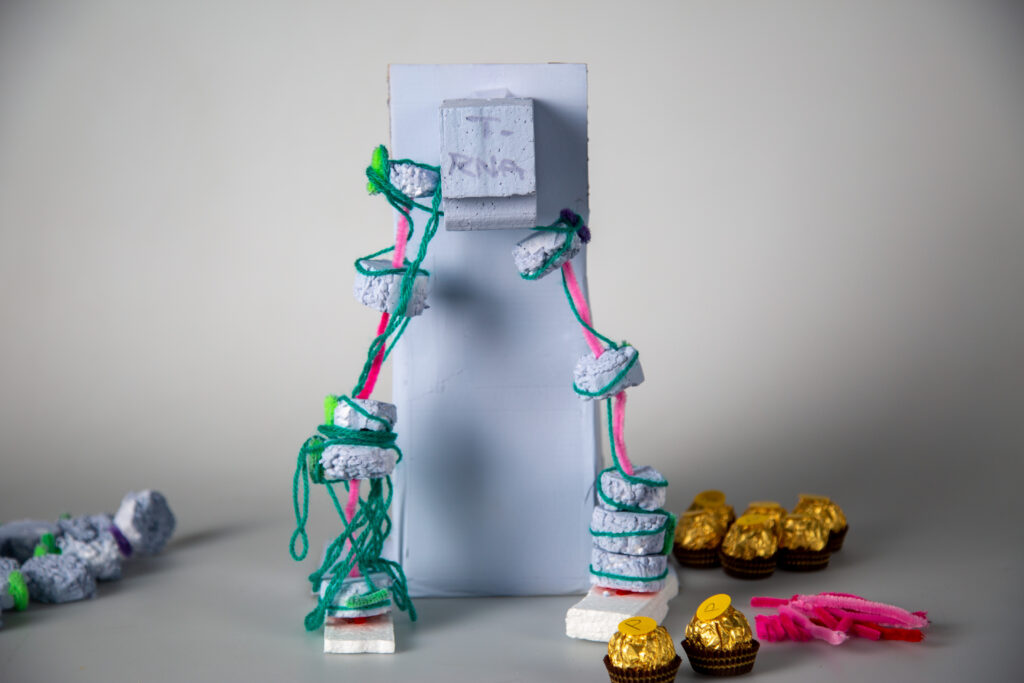
Conclusion
I overall really enjoyed the workshop and I think it is a really interesting topic, in which I would like to work on in the future as well. Carla was also a really great teacher. She could answer a lot of our questions and really helped us improve the projects. The workshop was really great to get a bit of an insight into the topic of science communication through interaction design. But I also think that the timeframe for the workshop was a bit too little, because I think we did not have a lot of time to do proper research about this topic and really understand what chromatin is, so I think our projects would need some further iterations to really work. But in general, it was really nice to have the opportunity to meet people out of different universities and dive into different fields for a week. It was also very interesting and inspiring to see what other workshops have done during the week.
